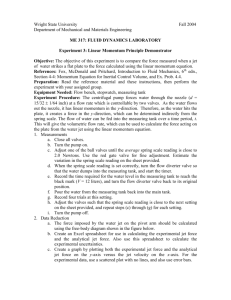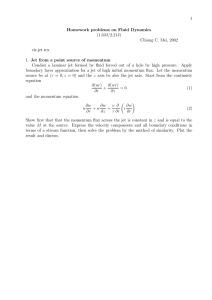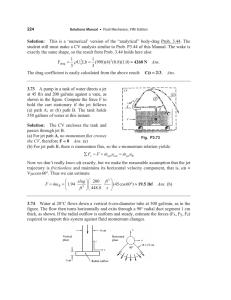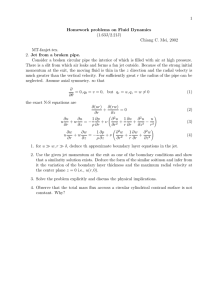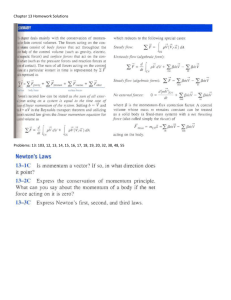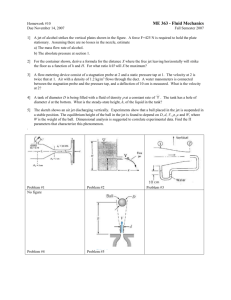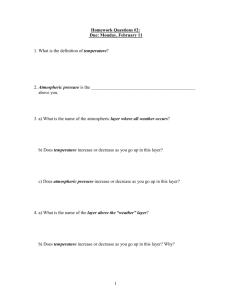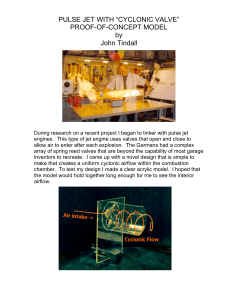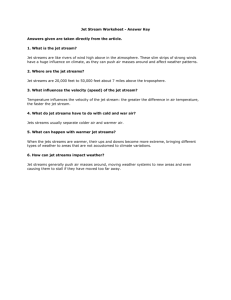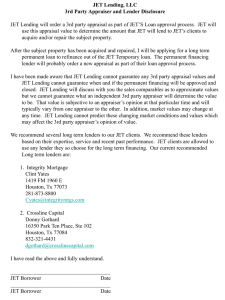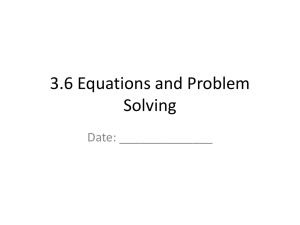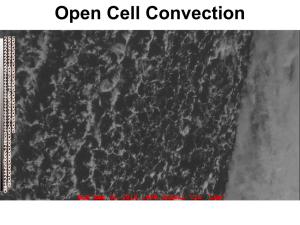Experiment 3: Linear Momentum Principle Demonstrator
advertisement
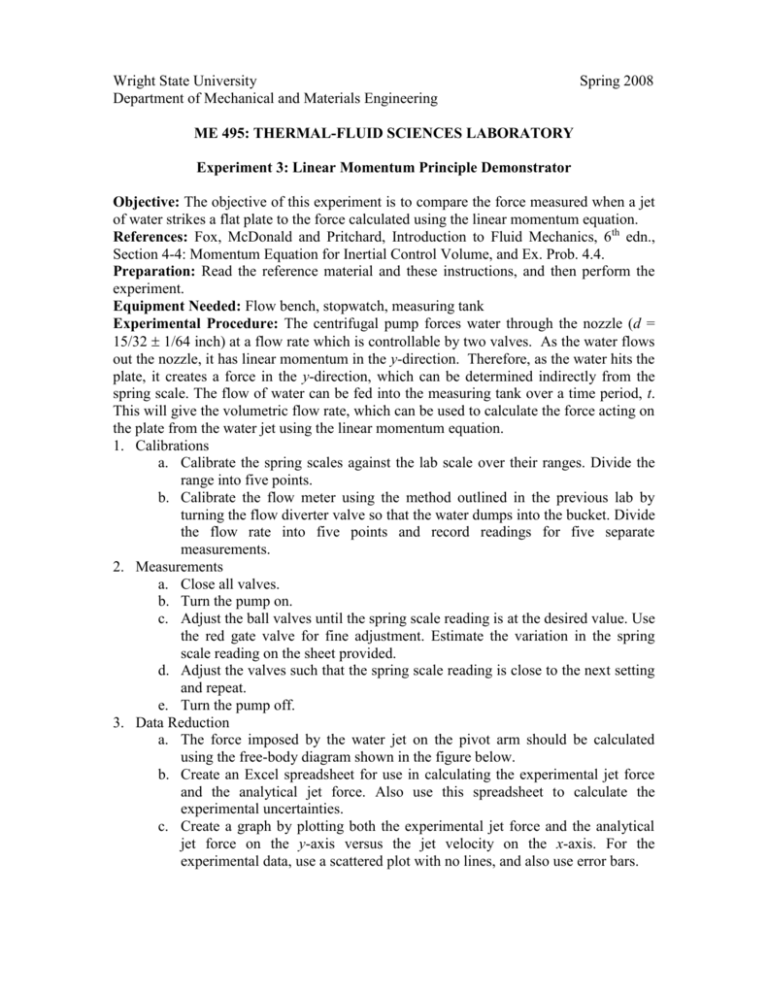
Wright State University Department of Mechanical and Materials Engineering Spring 2008 ME 495: THERMAL-FLUID SCIENCES LABORATORY Experiment 3: Linear Momentum Principle Demonstrator Objective: The objective of this experiment is to compare the force measured when a jet of water strikes a flat plate to the force calculated using the linear momentum equation. References: Fox, McDonald and Pritchard, Introduction to Fluid Mechanics, 6th edn., Section 4-4: Momentum Equation for Inertial Control Volume, and Ex. Prob. 4.4. Preparation: Read the reference material and these instructions, and then perform the experiment. Equipment Needed: Flow bench, stopwatch, measuring tank Experimental Procedure: The centrifugal pump forces water through the nozzle (d = 15/32 1/64 inch) at a flow rate which is controllable by two valves. As the water flows out the nozzle, it has linear momentum in the y-direction. Therefore, as the water hits the plate, it creates a force in the y-direction, which can be determined indirectly from the spring scale. The flow of water can be fed into the measuring tank over a time period, t. This will give the volumetric flow rate, which can be used to calculate the force acting on the plate from the water jet using the linear momentum equation. 1. Calibrations a. Calibrate the spring scales against the lab scale over their ranges. Divide the range into five points. b. Calibrate the flow meter using the method outlined in the previous lab by turning the flow diverter valve so that the water dumps into the bucket. Divide the flow rate into five points and record readings for five separate measurements. 2. Measurements a. Close all valves. b. Turn the pump on. c. Adjust the ball valves until the spring scale reading is at the desired value. Use the red gate valve for fine adjustment. Estimate the variation in the spring scale reading on the sheet provided. d. Adjust the valves such that the spring scale reading is close to the next setting and repeat. e. Turn the pump off. 3. Data Reduction a. The force imposed by the water jet on the pivot arm should be calculated using the free-body diagram shown in the figure below. b. Create an Excel spreadsheet for use in calculating the experimental jet force and the analytical jet force. Also use this spreadsheet to calculate the experimental uncertainties. c. Create a graph by plotting both the experimental jet force and the analytical jet force on the y-axis versus the jet velocity on the x-axis. For the experimental data, use a scattered plot with no lines, and also use error bars. Experimental Uncertainty: Estimate the uncertainties in the calculated results for the experimental jet force. Account for the following uncertainties: The flow rate, the nozzle diameter, the variation of the spring scale reading during the experiment, and the lengths of the pivot arm. Report: Prepare a brief report in the usual format. The above-mentioned Excel spreadsheet and the graph are to be included. Answer the following questions: 1. Is the jet force predicted well by the analysis? Why or why not? 2. How repeatable is the data? 3. Briefly discuss the best way to redesign this experiment. What key points would significantly improve the accuracy of the experimental data? m = 200 grams L2 L1 Pivot Point mg Fjet Spring Scale
